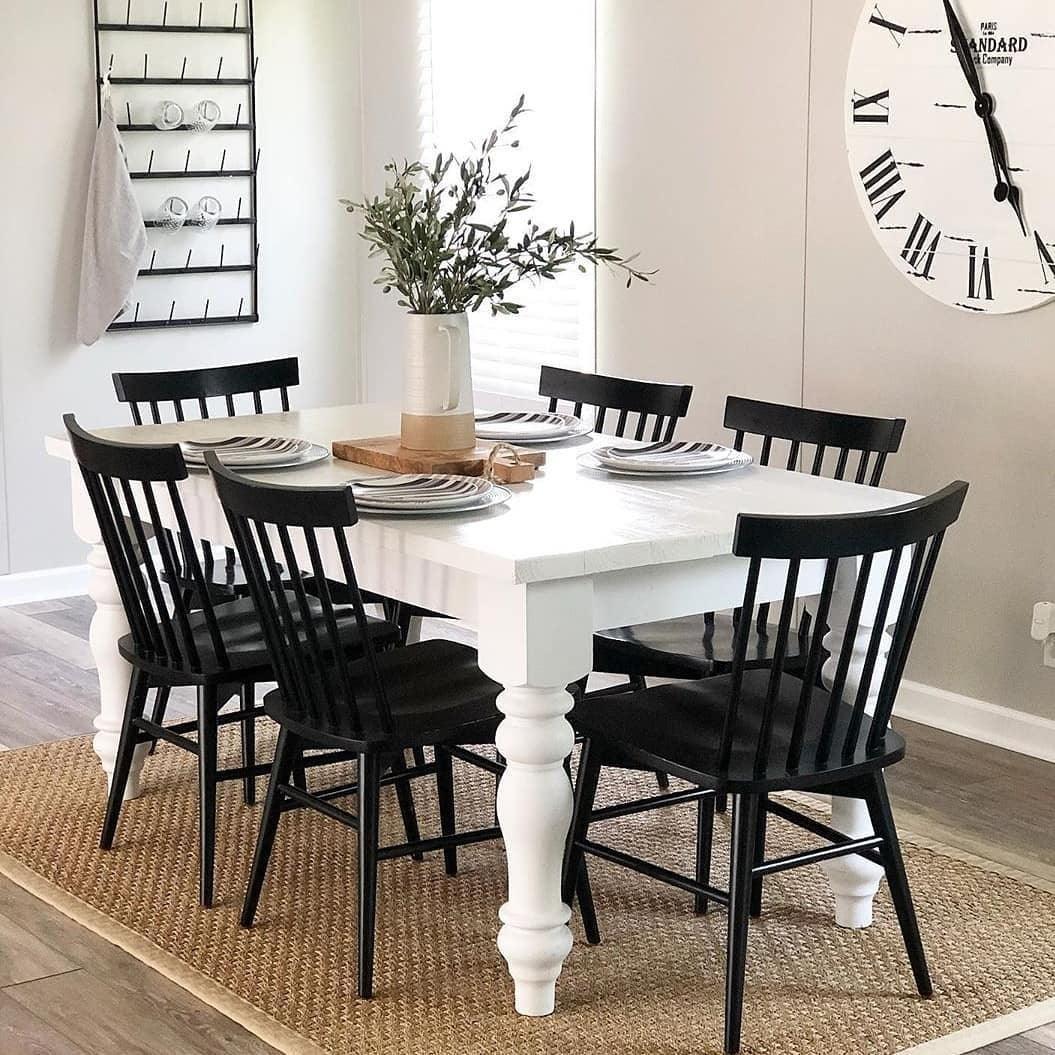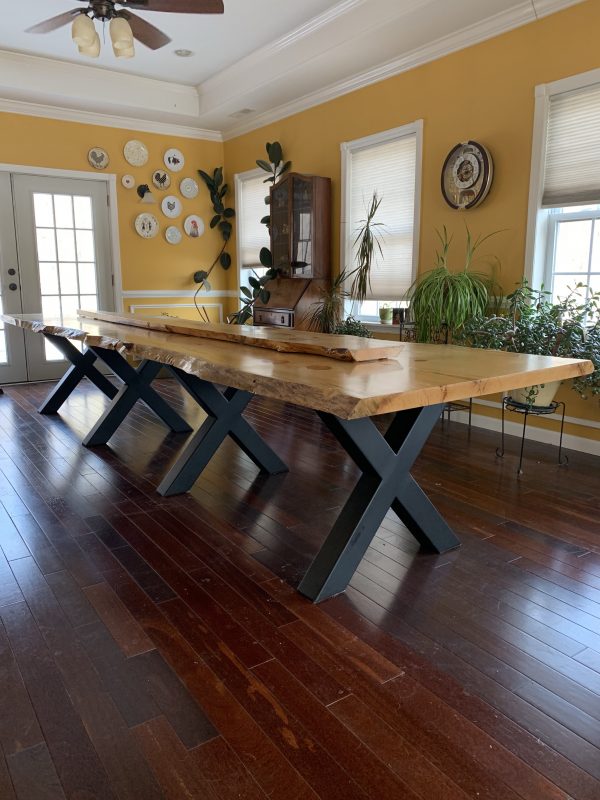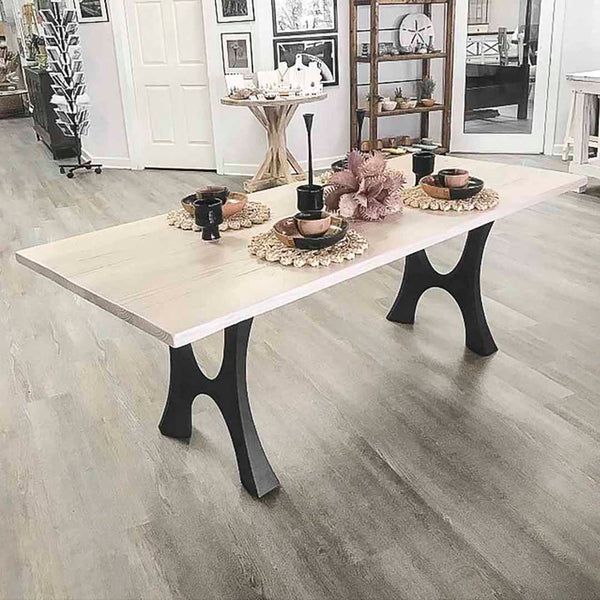How to Maintain and Care for Your Dining Room Table Legs
How to Maintain and Care for Your Dining Room Table Legs
Blog Article
How to Choose the Perfect Dining-room Table Legs for Your Home Decoration
Picking the excellent eating area table legs is a nuanced process that needs careful consideration of different aspects, including your area constraints, aesthetic preferences, and practical needs. The interplay between dimensions, styles, and materials can substantially affect the ambiance of your eating location, making it vital to approach this choice systematically.
Assess Your Eating Space
Assessing your dining area is vital for selecting the right table legs that match both appearances and functionality. Begin by determining the measurements of your dining location, including ceiling elevation, flooring space, and proximity to other furnishings. This information will certainly help determine the ideal dimension and elevation of your dining table, which directly affects the option of table legs.
Following, consider the style and design of your eating space. As an example, an open-concept layout may take advantage of table legs that provide aesthetic lightness, such as slender metal or acrylic alternatives. Alternatively, a much more standard setting may require sturdy wood legs that give a feeling of durability.
Evaluate the existing shade palette and materials in your dining location. Harmonizing the table legs with these elements produces a natural appearance that boosts the general style.
Ultimately, a complete evaluation of your eating area will certainly assist you in making an informed decision, guaranteeing that your table legs not only improve the aesthetic charm but also serve practical functions.
Consider Your Style Preferences
When picking dining-room table legs, it is vital to review your personal design choices, as they significantly affect the total aesthetic of your eating space. Your choice of table legs can either complement or contrast with existing décor, making it crucial to straighten them with your recommended interior layout style.
If your home leans towards a contemporary aesthetic, think about smooth metal or minimalist wood legs that offer a clean, clean appearance. For a more conventional approach, luxuriant wooden legs with elaborate makings can include a touch of sophistication and elegance. Industrial styles profit from robust, basic materials such as redeemed wood and steel combinations, showing a sturdy appeal.
Furthermore, farmhouse and rustic designs often favor sturdy, beefy legs that stimulate a feeling of heat and convenience. Conversely, if your decor is diverse, you might select non-traditional shapes or a mix of materials to produce visual rate of interest.

Evaluate Product Options
The selection of product for eating area table legs plays a pivotal duty in both durability and visual appeal. Usual materials consist of timber, steel, and composite options, each offering distinct qualities that can influence the general look and long life of your table.
Wood is a traditional option, recognized for its warmth and convenience. Woods like oak and walnut provide remarkable stamina and can be completed in numerous stains to match any type of design. Nonetheless, softwoods like ache are more vulnerable to damages and scrapes, making them much less excellent for high-traffic areas.
Metal legs, hop over to these guys usually crafted from steel or light weight aluminum, exhibit modernity and industrial beauty. They are highly sturdy and immune to put on, making them appropriate for family members with kids or constant gatherings (dining room table legs). Furthermore, metal can be finished in numerous colors, enhancing the modification opportunities
Composite materials, such as MDF or laminate, deal affordability and varied designs. While generally less durable than strong wood or steel, they can still provide a trendy appearance and are commonly very easy to keep.
Eventually, the product you select must align with your way of life, visual preferences, and the degree of usage your table will certainly experience.
Determine Elevation and Dimension
Choosing the ideal elevation and dimension for your official statement dining-room table is necessary for both capability and comfort. The standard elevation for dining tables normally varies from 28 to 30 inches, permitting enough legroom for a lot of individuals when seated. It is essential to take into consideration the dimensions of your eating area and the kinds of chairs you prepare to utilize.

In addition, think about the proportions of your dining-room. A larger table in a roomy area can produce a grand ambiance, while a smaller table works well in more intimate setups. Inevitably, the appropriate elevation and size will certainly harmonize with your general decor and enhance the dining experience for you and your guests.
Explore Personalization Possibilities

In addition, the design of the legs can be tailored to fit various designs, such as rustic, modern-day, or industrial. Tapered legs can evoke a mid-century modern feel, Check Out Your URL while chunky, block-style legs may reverberate with conventional or farmhouse decor.
Home owners can also discover shade finishes, from natural timber stains to repaint, enabling them to match or contrast with the tabletop and surrounding style.
Furthermore, leg height can be adapted to suit particular seating arrangements or personal preferences, boosting both convenience and functionality.
Last but not least, distinct embellishments, such as makings or ornamental braces, can better individualize the table legs, making the dining experience not simply a declaration yet a dish item in the home. By considering these personalization choices, homeowners can develop a dining-room table that really shows their uniqueness.
Conclusion
Choosing the ideal eating space table legs needs mindful consideration of different elements, consisting of the measurements of the dining room, style preferences, material durability, and wanted elevation. Customization alternatives additionally boost the capability to accomplish a cohesive aesthetic that enhances the overall decoration. By systematically assessing these components, house owners can ensure that the picked table legs not just fulfill practical needs but additionally contribute favorably to the eating experience and ambiance of the home.
Choosing the perfect eating area table legs is a nuanced process that requires cautious factor to consider of numerous aspects, including your space restrictions, aesthetic preferences, and practical needs.Analyzing your dining room is vital for picking the right table legs that enhance both visual appeals and capability.When establishing dimension, determine the location where the table will certainly be placed to guarantee it fits comfortably, enabling for at least 36 inches of clearance around the table for easy activity. A larger table in a large location can develop a grand setting, while a smaller sized table works well in even more intimate setups.Choosing the optimal dining space table legs needs careful consideration of numerous variables, consisting of the dimensions of the dining space, design preferences, product longevity, and desired elevation.
Report this page